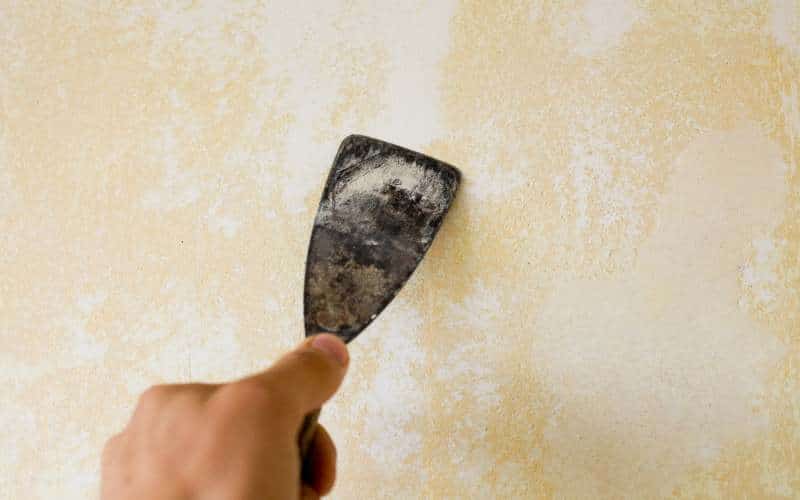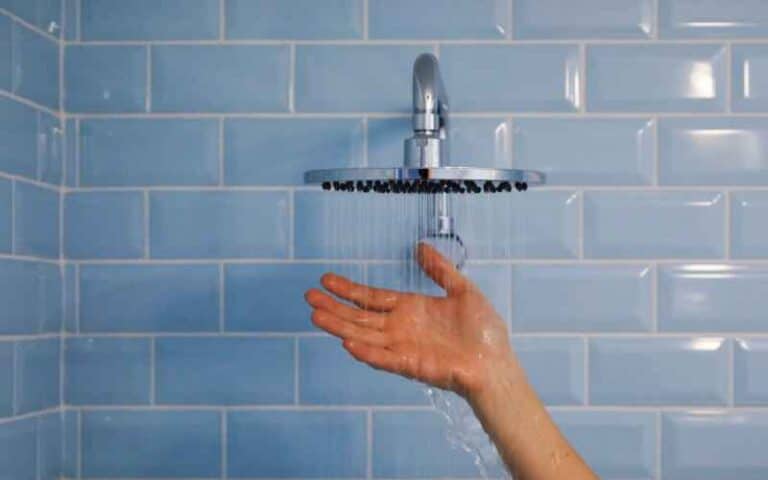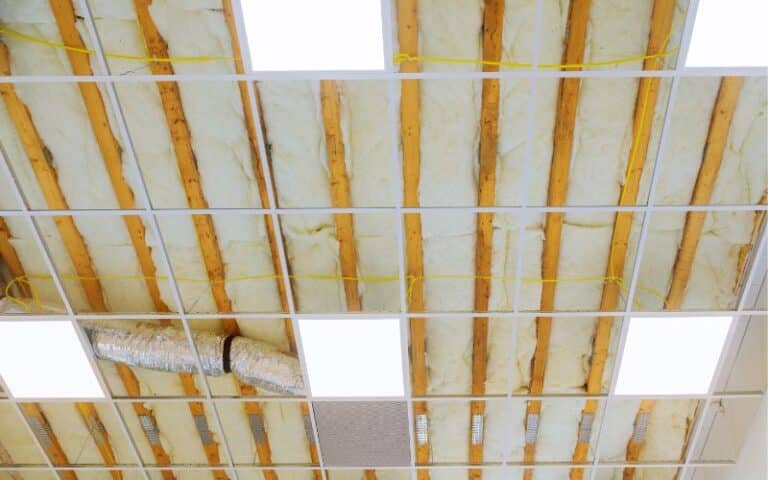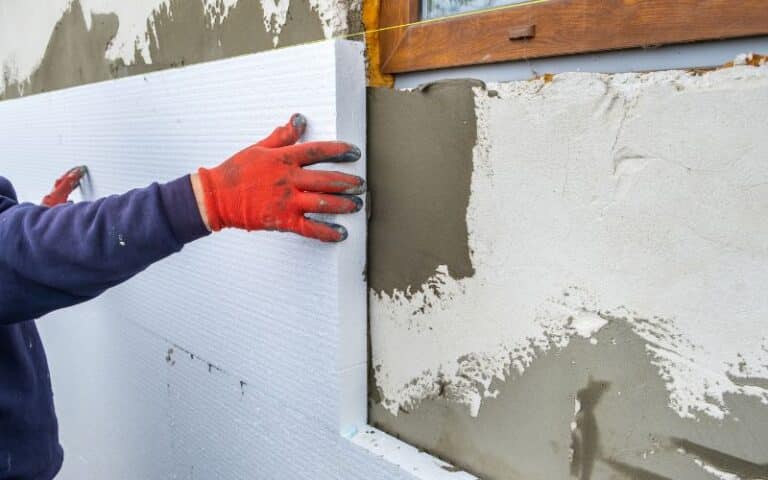Drywall tape can come loose with time, or if the contractor doesn’t install it properly, the joint tape is damaged, so you’ll have to put it back in place.
Although there are many ways to put drywall tape back in place, glue is one of the easiest. But can glue effectively hold down loose drywall tape?
You can glue drywall tape down. Apply a moderate quantity of glue to the tape and hold it against the wall for the required amount of time on the glue. It would help ensure the surface is smooth, clean, and moisture-free.
Drywall tape coming off is very common, and there are several ways to fix it. Keep reading to find out how to fix your peeling or loose drywall tape.
Ready for a Drywall Quiz?
Why Is My Drywall Tape Coming Off?

The most likely cause of peeling drywall tape is drywall getting wet. Drywall taping compounds are water-based, so you’re vulnerable to water damage.
So, if the drywall comes in contact with water, other liquid, or moisture, the drywall tape will start peeling or coming off.
Drywall taping coming loose is a common problem; it is more likely to occur when a roof leak or some other structural issue exposes the drywall to a lot of moisture.
Poor application technique can also cause drywall tape to peel after some time; if the person applying the drywall is not a professional, they will not do a thorough job.
Excess humidity can also cause the drywall to come off. When this happens, it’s mostly in one or two rooms or parts of the house that don’t have proper ventilation.
Finally, activity from children and pets can also be responsible for peeling drywall. So, if your pets or kids keep playing with the drywall, they may cause it to peel.
Normal settling can also make drywall tape peel, especially in a newly constructed apartment.
If the nail pops aren’t positioned correctly, the wallboards will keep shifting and peeling the tape.
While it is important to repair drywall, especially for the aesthetic effect, the issue will reoccur if you don’t correct the underlying cause.
So, if you suspect humidity may be responsible, use a damp dehumidifier in parts of your home, like the attic and the bathrooms, and properly ventilate your home.
If there are any leaks in the windows, doors, or roofs, it’s better to fix them because if your repair the peeling tape without fixing the main issue, it will keep reoccurring.
Repair the settling if that is the issue; you’ll also have to fix the settling before you repair the drywall.
Once the pops are in the correct place, the wallboards will remain intact, and the drywall will not peel.
Can You Glue Down Loose Drywall Tape?
You can glue down loose drywall tape. However, you should only attempt to glue down peeling or loose drywall tape if it’s only pulling away in a small area.
You can use household glue or any other type of glue, insert a generous amount of glue but not too much on the tape and hold it tight against the wall. If it holds, then you’re good.
However, the glue may not be able to hold the tape together in all cases, so there is a more serious underlying issue.
It means the seam is failing, and you’ll have to remove and replace the tape completely instead of trying to glue the old tape back to the wall.
To do so, follow the steps below.
- Cut along the edges of the drywall tape to some inches on either side of the peeling area so you can get all the peeling areas.
- Next, cut across the tape with a knife so you can remove the damaged section of the drywall.
- Peel out the remaining tape carefully with a putty knife, and take care not to rip away any section of paper surface of the drywall underneath the tape.
- After you’ve removed the damaged drywall tape, you can get a fresh tape and repair the area; you can repaint the old or new tape to give it a fresh, even appearance.
However, you can only do this for minor drywall tape tears because you’ll only need to reinforce the damaged tape.
What is the Best Way to Fix Loose Drywall Tape?
Several homeowners experience issues with peeling drywall tape during their stay in their homes.
When that happens, it can leave horizontal and vertical seams, allowing moisture to enter and causing mold and other issues in the home.
Usually, it’s best to leave the fixing of peeling drywall tape to the professionals, but if you wish to carry out the repairs yourself.
Here’s a detailed guide to the best way to fix loose drywall tape;
#1. Wipe Down the Area With Damaged Drywall Tape
First, clean the dust or debris from the damaged drywall section with a clean cloth. Then, you can let the paint chips or any chunks of damaged drywall fall to the ground.
Keep removing any debris until you see the tape you need to replace.
#2. Remove the Damaged Tape
Once you can see the tape, pry it underneath it with a drywall knife. Lift the tape with both hands and pull at it from both directions.
Once you get to where it is installed fully, it will tear on its own.
#3. Mix Your Joint Compound
If you bought a powdered joint compound or you want to make your joint compound, you’ll need to mix it with water.
So, use a fast-setting joint compound and make sure to mix it with water in a pan or a smaller container. Then, use the putty knife you’ll be using to patch over the tape.
However, if you bought a premixed joint compound, you can skip the process altogether.
#4. Apply Fast Setting Joint Compound
Take your mixed joint compound or the combination you’ve bought and use your joint knife to apply the compound thoroughly to the affected areas.
Extend the joint compound application to five inches in both directions of the damaged area so that the joint compound won’t tear again in the future; apply thoroughly.
Repeat the process twice or three more times to ensure that you have applied the compound fully and apply pressure.
#5. Allow the Joint Compound to Dry
Check the packaging for the time; the joint compound may dry in 30 minutes or six hours. Wait until it completely dries; to be on the safe side, wait for 12 hours.
When the compound becomes chalky and dry, you can proceed. But run your hand over it to make sure.
#6. Sand the Area
Use 150-grit sandpaper and a sanding sponge to firmly sand the area covered by the joint compound.
Scrub back thoroughly to remove any remaining debris. If there are any bumps on the wall, keep sanding until you’ve gotten rid of any bumps in the wall.
Remember to use fine-graded sandpaper, as it provides smooth scratching and is ideal when it’s time for painting.
#7. Paint Over the Patch
After you’ve covered up the area, you need to wipe it over with a clean rag, and then you can repaint it.
Fill a paint tray with paint that matches your walls, and use a roller or a brush to repaint the patched areas.
You may also need to prime the walls to prevent the compound from showing through, but that depends on the patch size, paint type, and joint compound.
Best Tape For Drywall
Drywall work is a must for many homeowners, meaning they need drywall tape to reinforce the joints and let the mud do its work.
If you’re fixing your drywall, these five drywall tapes are the best options for you.
#1. Fiberglass Mesh Drywall Tape
Fiberglass mesh tape is very strong mostly because of the fiberglass threads woven together in the tape. You can hardly tear the tape, but it is gummy and difficult to handle.
#2. Ultra-thin Fiberglass Drywall Tape
Ultra-thin is an improvement from regular fiberglass tape; it is also thinner and easier to handle. It also has more threads, and it is stronger than its predecessor.
#3. Metal Drywall Tape
Metal drywall tape is two strips of very thin metal running the length of a tape with a small gap in the middle. You cannot use this tape on flat surfaces or outside corners.
But because it has a crease, you can use it more easily than ordinary paper drywall tape.
#4. Paper Drywall Tape
Paper drywall tape is long strips of paper in rolls of 75ft. There is a slight factory crease in the length of the paper that makes it easier to fold for inside corners.
The more popular types of drywall are fiberglass drywall and paper drywall tape.
The table below will check the pros and cons of fiberglass drywall.
| Pros of Fiberglass Drywall | Cons of Fiberglass Drywall |
|---|---|
| Very strong | Shreds easily |
| Self-adhering | Leaves sticky residue |
| Resistant to air bubbles | It may leave bulges after installation. |
Here are the pros and cons of Paper drywall;
| Pros of Paper Drywall | Cons of Paper Drywall |
|---|---|
| Readily available | It’s weak on its own |
| Cheap | It can be easily punctured |
| Easy to rip | Difficult to install |






